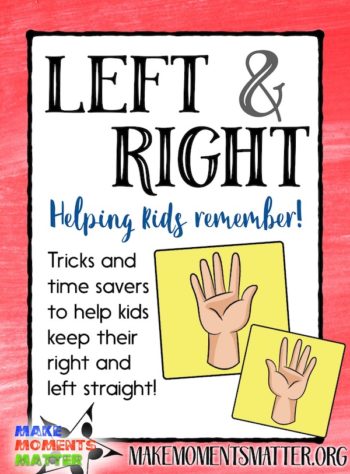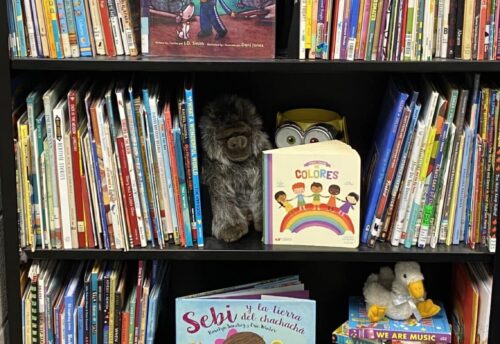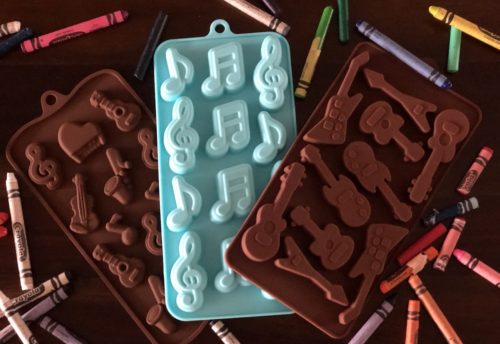
Right and Left – Helping Kids Remember
 Every chance that I can, I use little phrases or hand signals to save time. I try and do everything I can do to streamline my instruction so that I don’t have to reexplain or go back and reteach. I only get 25 minutes twice a week with my kids and that’s not much. We don’t have a passing period between classes so that means that several of the 25 minutes that are supposed to be dedicated to teaching are wasted on walking down to the gym to trade classes or waiting for their classroom teacher to show up.
Every chance that I can, I use little phrases or hand signals to save time. I try and do everything I can do to streamline my instruction so that I don’t have to reexplain or go back and reteach. I only get 25 minutes twice a week with my kids and that’s not much. We don’t have a passing period between classes so that means that several of the 25 minutes that are supposed to be dedicated to teaching are wasted on walking down to the gym to trade classes or waiting for their classroom teacher to show up.
I feel like one problem I always struggle to deal with is how to help kids remember their right from their left. I love talking about this problem with non-teachers because they are always amazed that kids can’t remember their right from their left. Should be simple, right? Research shows that the right/left problem is actually a very difficult thing for kids to deal with and it has a lot to do with humans having two hemispheres in our brains. Whatever the reason, I feel like Right and Left constantly haunts me. Whether it’s concert preparation, recorder hand position, mallet technique, or dance instructions I’m always saying something like, “No, your right hand. Your RIGHT hand. That’s your left!” It’s a constant struggle.
Why not use a few little tricks to make the right and left conundrum an little easier? Below you’ll find a few ideas on how to help kids keep their right and left straight and how you can apply that knowledge when it comes time for concert preparation.
Posters for Directions
 I feel like I’m constantly saying things like “left hand on the top of the recorder” or “raise your left hand… no, that’s your right. Your LEFT” or “Your left mallet should play an F and the Right mallet should play a C.” They don’t mean to, but kids forget which is their left and right. Why don’t we be optimistic and say that the kids are processing so much so quickly and trying to file away so much new information that Right and Left get lost in the shuffle. They’re too busy and that whole hand coordination thing escapes them if only for a little while.
I feel like I’m constantly saying things like “left hand on the top of the recorder” or “raise your left hand… no, that’s your right. Your LEFT” or “Your left mallet should play an F and the Right mallet should play a C.” They don’t mean to, but kids forget which is their left and right. Why don’t we be optimistic and say that the kids are processing so much so quickly and trying to file away so much new information that Right and Left get lost in the shuffle. They’re too busy and that whole hand coordination thing escapes them if only for a little while.
I’ve seen some classrooms where teachers have a big hand print that says “Right” or “Left” or sometimes even just the words “Right” or “Left” on their wall. I know that a lot of teachers already have something like this to help kiddos remember which is their right side and which is their left. This year I decided to try it out and I made my own posters for the wall. I found some colorful paper and on it I stuck a picture of a hand and the letter L for left and R for right.
I’ve found that it’s so much easier just to post the pictures and let kids figure things out rather than keep saying over and over “your other left.” It’s especially nice when you’re teaching a folk dance or (as mentioned above) when students forget about which hand goes on the top of the recorder. Now, my students are good about checking the wall if they need to verify which hand is which. “Check the wall” or “check your hands” is so much easier on kids and produces less stress because eventually students just start checking on their own.
Left is Right and Right is Wrong
Right now I’m in the middle of concert preparations for four grades. Not fourth grade — four separate grades. I combine two grade levels into each of my concerts (Kdg-1st, 2nd-3rd, and 4th-5th) and I currently have two programs running with four grades. Right now at any given minute my brain is trying to focus on a multitude of songs and deadlines and props and standing charts. My brain is sort of on constant overload so I take any and all time savers that I can get.
One of the hardest things for me is trying to remember choreography for all of these songs. Two programs between four grades means that I’ve got quite a few songs to work through and it’s hard to keep all the actions and movements straight. I definitely have moments where I forget what goes next and my modeling of the actions gets a little messed up. AND YOU KNOW that there is always that one student that calls you out for messing up. Bless their little hearts.
So, my trick is this: Left is Right and Right is Wrong! Any time that a student has to move one side of their body (not mirrored movement with both hands or both feet) you always go LEFT first. Maybe you’re sweeping your hands, well sweep left first and then sweep right. Maybe you’re waving with one hand and then the other. Wave with the left first and then you can do the right. Maybe you’re swaying to the beat. Sway left first. Choosing a direction to go towards EVERY TIME saves the stress of thinking “which way do I move?” Students just know that they are always going to move one direction first and they know what direction that is. I say the phrase “Left is Right and Right is Wrong” a couple of times and then we’re good.
 When I first introduce this idea I make a big deal out of what it means. Left is Right can confuse them so I take a few seconds to talk about/ask about how “right” can mean two things: right (the direction) or right (correct). I ask them “When I say that left is right, do I mean that left is the direction (right) or something different?” and they can quickly respond that I mean that left is correct. They like the play on words and the rule that left is always correct helps them keep choreography straight.
When I first introduce this idea I make a big deal out of what it means. Left is Right can confuse them so I take a few seconds to talk about/ask about how “right” can mean two things: right (the direction) or right (correct). I ask them “When I say that left is right, do I mean that left is the direction (right) or something different?” and they can quickly respond that I mean that left is correct. They like the play on words and the rule that left is always correct helps them keep choreography straight.
Why left, you ask? Why not go right first? Well, there are two reasons. Number one I want to prep them (years in advance) for marching band. In band you always starting walking/marching/moving with your left foot first. I felt like that was a good connection. The slightly more selfish reason that I chose left was that I am right handed. I will naturally use my right side first. It’s a pain for me to remember directions over and over again and my natural tendency is to go to the right anyway… So, if I’m mirroring the actions for them that means that when I move right they’ll go left. It was a no-brainer for me to make this change.
Do you have any quick and easy tips for helping kids remember their right and left? Leave a comment below to share you idea with me and with others!





Leave a Reply